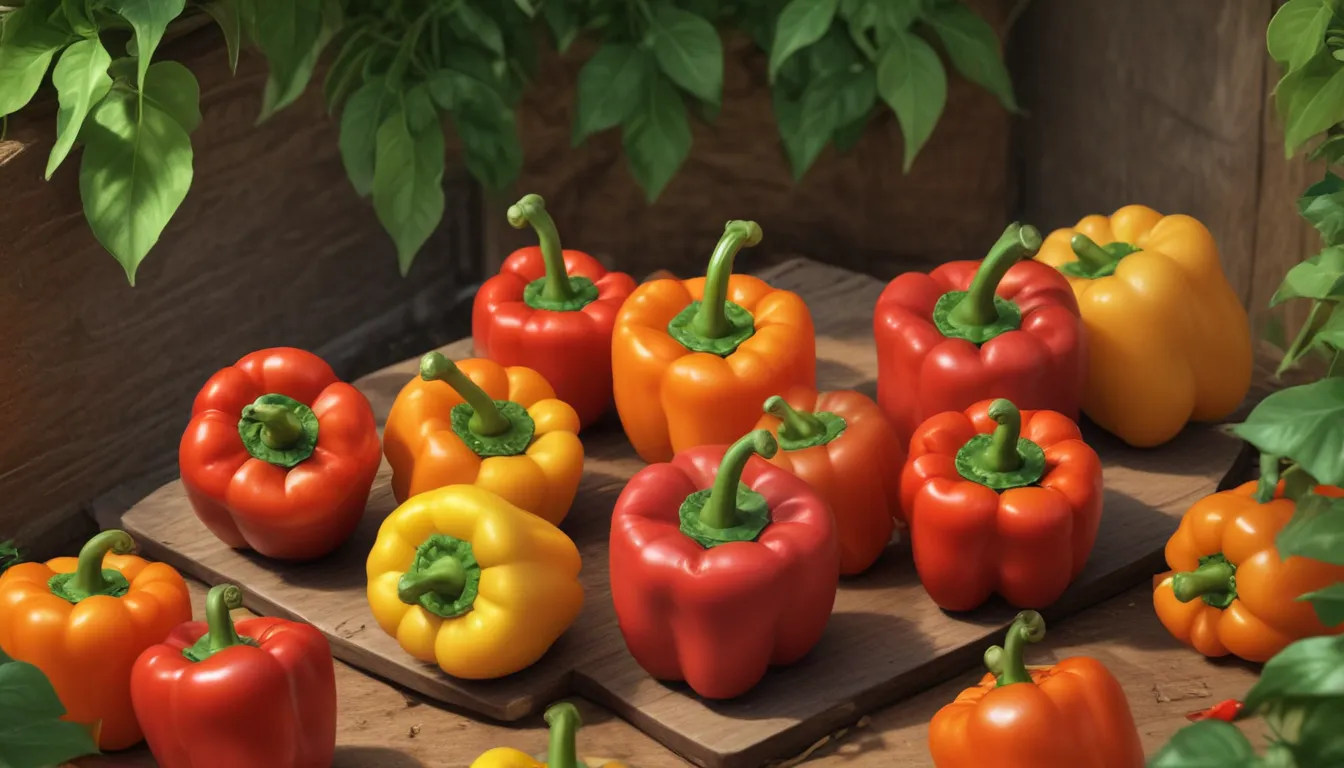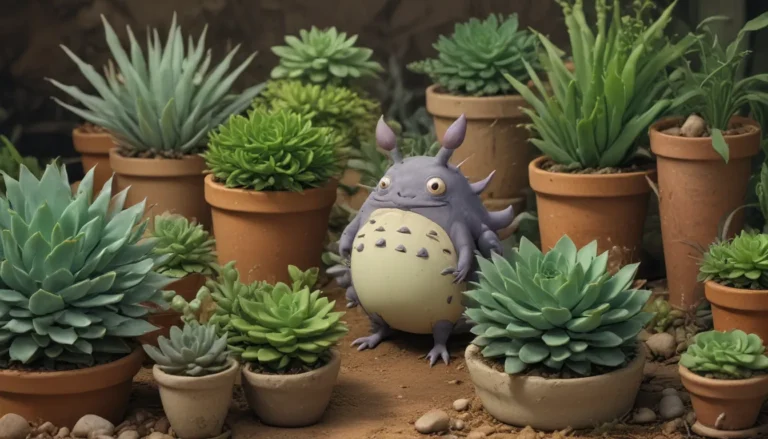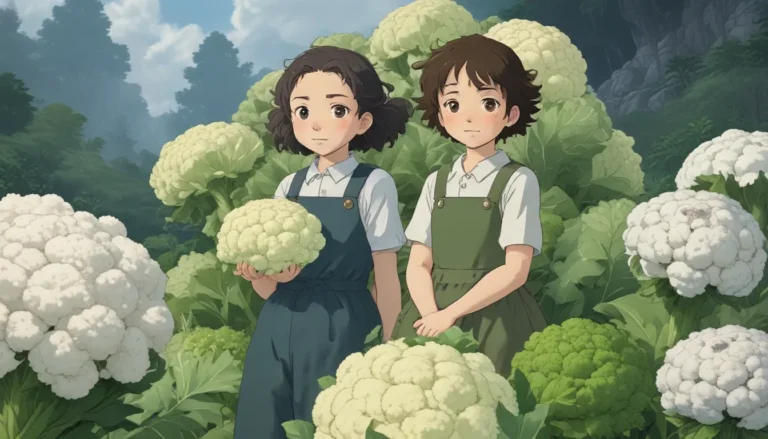Everything You Need to Know About Growing Delicious Bell Peppers in Your Backyard

Are you ready to add some crunch and sweetness to your garden with homegrown bell peppers? These vibrant plants are not only beautiful to look at but also provide a tasty addition to a wide array of dishes. From omelets to salads, bell peppers offer a satisfying crunch without the spice.
While growing bell peppers may seem intimidating at first, with the right information and a bit of care, you can easily cultivate these beauties in your backyard. From starting seeds to transplanting seedlings to plant care and maintenance, this comprehensive guide will walk you through everything you need to know to successfully grow and enjoy bell peppers in your own garden.
What You’ll Learn
Let’s dive into what you’ll learn in this article:
- Start Early: Understand why timing is crucial when growing bell peppers and how to get a head start with your seeds.
- What to Plant and Where to Buy: Explore different varieties of sweet bell peppers and where to purchase seeds or seedlings.
- Transplanting: Discover when and how to transplant your bell pepper plants into the garden for optimal growth.
- Growing Healthy Plants: Learn essential tips on how to care for your bell pepper plants to ensure healthy growth and fruit production.
- Managing Pests and Diseases: Find out how to protect your bell peppers from common pests and diseases to ensure a successful harvest.
- Harvesting: Understand when and how to harvest your bell peppers for the best flavor and longevity.
- A Few Recipe Ideas: Get inspired with delicious recipes that feature homegrown bell peppers as the star ingredient.
- Worth the Effort: Wrap up with key takeaways to help you feel confident and successful in growing bell peppers.
Start Early
Bell peppers thrive in warm climates and require a long growing season. To ensure a successful harvest, it’s essential to start your seeds early, especially in cooler climates. The rule of thumb is to start seeds indoors 6 to 8 weeks before the last frost date in spring. Consider saving seeds from store-bought bell peppers or purchasing a variety of seeds to explore different options.
Starting seeds in a warm, sunny spot with consistent heat will help promote germination. Once the seeds germinate and develop a few true leaves, pot them in larger containers with damp potting soil and organic fertilizer to encourage strong growth. Keep the plants consistently moist to ensure healthy development.
What to Plant and Where to Buy
There are numerous varieties of sweet bell peppers available, each offering unique flavors, colors, and sizes. From yellow Canary bells to purple Beauty peppers, you have a wide range of options to choose from. Consider purchasing seeds or seedlings from reputable sources to explore different varieties and expand your garden’s diversity.
Transplanting
Wait to transplant your bell pepper seedlings into the garden until a couple of weeks past the last frost date. Harden off the plants before moving them outdoors to help them acclimate to their new environment. Transplant them into warm soil, maintain adequate spacing between plants, and provide proper watering and mulching to promote healthy growth.
Growing Healthy Plants
Bell peppers thrive in full sun and well-draining, loamy soil with a neutral pH. Keep the plants consistently moist, especially during blooming and fruiting stages. Be mindful of temperature fluctuations, as bell peppers prefer temperatures between 70 and 90°F for optimal growth. Stake the plants if needed to support heavy fruits and avoid over-fertilizing, especially with nitrogen.
Managing Pests and Diseases
Protect your bell pepper plants from common pests and diseases such as root rot, blossom end rot, aphids, and spider mites. Maintain healthy plants by checking your garden regularly, inviting natural predators, and addressing any issues promptly. Avoid overwatering and ensure proper drainage to prevent soil-related diseases.
Harvesting
The timing of when to harvest your bell peppers is mostly up to personal preference. Pick green peppers for a more tangy flavor or leave them on the plant to ripen into sweeter red, yellow, or orange fruits. Make clean cuts when harvesting to avoid damaging the plant and store the peppers in the refrigerator for up to one week.
A Few Recipe Ideas
Incorporate your homegrown bell peppers into delicious recipes such as vegetable fajitas, chili, and shakshuka for a burst of flavor and nutrients. Experiment with preservation methods such as roasting, freezing, and dehydrating to enjoy your harvest year-round.
Worth the Effort
Growing bell peppers may seem overwhelming at first, but with proper care and attention, you can enjoy a bountiful harvest of these delightful fruits. Remember to start early, transplant carefully, provide optimal growing conditions, and address any pests or diseases promptly to ensure a successful growing season.
By following these essential tips and guidelines, you’ll be on your way to growing delicious bell peppers in your backyard. Share your experiences with different varieties and growing techniques to inspire others in their gardening journey.
Explore the world of peppers with additional guides on growing poblano peppers, ghost peppers, and Anaheim peppers for a diverse garden filled with vibrant colors and flavors.
Overall, by following these comprehensive guidelines and tips, you can cultivate delicious bell peppers in your backyard garden. From starting seeds to harvesting fruits, each step plays a crucial role in ensuring a successful growing season. Embrace the joy of gardening and savor the rewards of homegrown bell peppers in your favorite dishes. Happy gardening!





